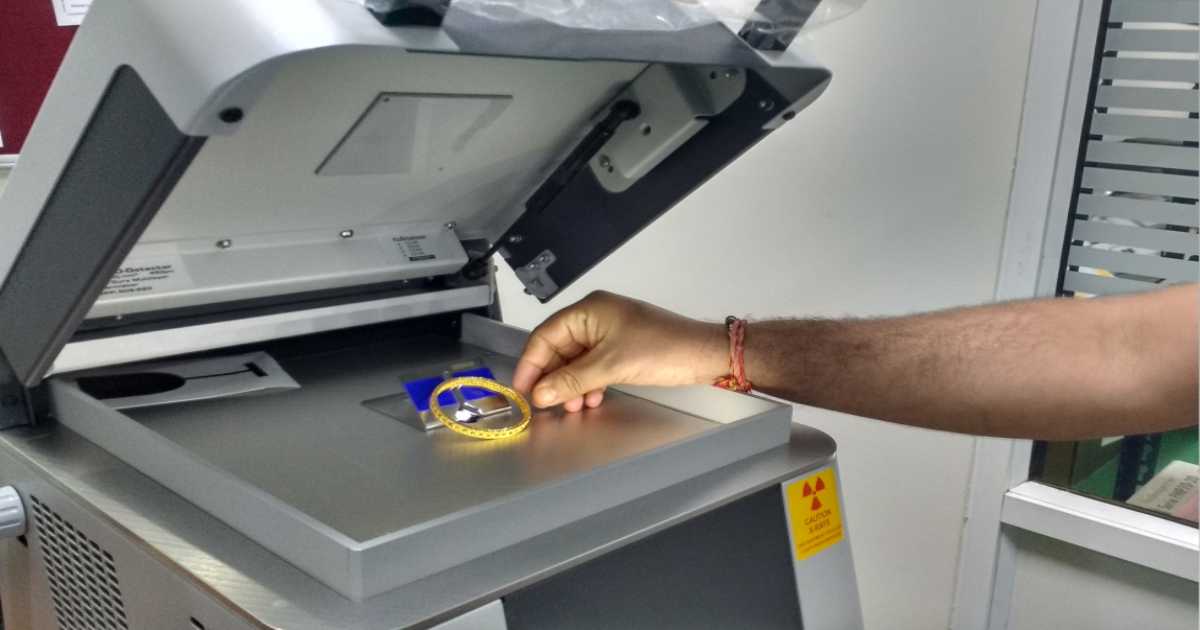Consultancy Services
Fire Assaying and Hallmarking Setup
Fire Assaying and Hallmarking Setup

Fire Assaying
Fire assaying stands as the industry standard process for obtaining accurate and reliable analytical data on gold and platinum group elements (PGEs) present in high-grade ores. While it has evolved and modernized over time, the fundamental principles of fire assaying have been in use for centuries. This time-tested method has proven its efficacy and is widely recognized and accepted in the mining and metallurgical industries.
Fire assaying is extensively employed in determining the gold content across various sample types. It is applicable to drill core samples obtained from exploratory drilling, soil samples collected from geochemical surveys, and chip samples taken from mineralized rock surfaces.
The process begins with sample preparation, wherein representative samples are carefully collected and processed. These samples are often crushed, ground, and homogenized to ensure accurate and consistent results. The homogenized sample is then subjected to the fire assay process.
During fire assaying, the prepared sample is fused with a flux, typically consisting of lead oxide and other additives. This fusion step helps to dissolve the gold and PGEs, along with other elements, present in the sample. The resulting fused material, known as a "button," is then transferred to a cupel—a porous container made of bone ash or a similar material.
Cupellation, a critical stage in fire assaying, involves heating the cupel with the button inside a high-temperature furnace. As the temperature rises, the lead in the button oxidizes and forms litharge (lead oxide), which is absorbed into the cupel. This absorption process removes impurities, leaving behind a small bead containing the precious metals.
The resulting bead is carefully recovered, and its weight is determined. This weight, along with other calculations involving the sample weight and other factors, is used to determine the gold content accurately. In the case of PGE analysis, additional analytical techniques may be employed to quantify the individual elements present in the bead.
Fire assaying is regarded as a highly reliable and precise method for gold and PGE determination. Its long-standing history and standardization make it an essential tool in the assessment of high-grade ores and mineral samples. While alternative analytical techniques have emerged, fire assaying remains unparalleled for its ability to provide accurate data in a wide range of sample types, making it an indispensable process in the mining and exploration industries.
Hallmarking
Hallmarking Certification and Setup refers to the process of obtaining the necessary certification and establishing a system for hallmarking precious metal products. Hallmarking is a process that verifies the purity or fineness of precious metal items such as gold, silver, platinum, and palladium, providing assurance to consumers regarding the quality and authenticity of the product. Here are the key aspects of Hallmarking Certification and Setup
1. Understanding Hallmarking Standards Familiarize yourself with the hallmarking standards and regulations applicable to your jurisdiction. These standards define the acceptable purity levels, marking requirements, and quality control processes for different precious metals.
2. Certification and Accreditation Seek accreditation from recognized hallmarking authorities or organizations. The accreditation process involves meeting specific criteria and demonstrating compliance with the prescribed standards and procedures. Once accredited, you can legally hallmark your precious metal products.
3. Infrastructure and Equipment Set up the necessary infrastructure and acquire appropriate equipment for hallmarking. This may include a designated hallmarking center or facility, specialized marking tools, weighing scales, and equipment for testing and analysis of precious metals.
4. Quality Control Procedures Establish robust quality control procedures to ensure accurate and consistent hallmarking. This involves implementing stringent testing methods, assaying techniques, and documentation processes to verify the purity of precious metal products.
5. Training and Expertise Provide training to personnel involved in the hallmarking process. This includes educating them on the hallmarking standards, testing methodologies, and proper handling of precious metal items. Training ensures the competency and proficiency of the hallmarking team.
6. Hallmarking Process Develop a streamlined process for hallmarking, encompassing steps such as verification of metal purity, marking the product with the appropriate hallmarks (e.g., fineness, assay office, manufacturer's mark), and maintaining accurate records of each hallmarking transaction.
7. Compliance and Auditing Regularly assess and monitor your hallmarking processes to ensure compliance with regulatory requirements. Internal audits and periodic inspections by hallmarking authorities may be conducted to verify adherence to standards and maintain certification.
8. Marketing and Consumer Awareness Promote the significance of hallmarking to consumers and stakeholders. Highlight the benefits of purchasing hallmark-certified precious metal products, such as assurance of purity, investment value, and protection against counterfeit items.
Hallmarking Certification and Setup is essential for businesses involved in the production, trading, or retailing of precious metal products. It demonstrates a commitment to quality, authenticity, and consumer protection, enhancing trust and credibility in the marketplace. By following the necessary procedures and standards, you can establish a robust hallmarking system that ensures the integrity of your precious metal offerings.